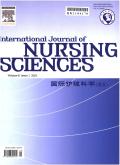Translation, validity, and reliability of the Thai de Morton Mobility Index in patients following hip surgery
IF 3.1
3区 医学
Q1 NURSING
引用次数: 0
Abstract
Objective
This study aimed to translate the de Morton Mobility Index (DEMMI) into Thai and assess its measurement properties.
Methods
The de Morton Mobility Index (DEMMI) was translated into Thai using a cross-cultural translation method. A cross-sectional study was conducted in four public hospitals in Thailand between January and March 2023. A total of 260 patients were recruited from outpatient clinics. Convergent and known-group validity were evaluated through hypothesis testing. Construct validity was examined using confirmatory factor analysis. Reliability was assessed using Cronbach’s α coefficient. We also employed the Rasch analysis to validate validity and person reliability.
Results
Content validity was high (S-CVI = 0.96, I-CVI range: 0.80–1.00). Strong convergent validity was observed, with a significant correlation (r = 0.761, P < 0.001) between the Thai DEMMI and the Parker Mobility Scale (PMS). Known-group validity was evident, demonstrating differences in scores across various patient groups. A confirmatory factor analysis supported the hypothesized factor structure of the Thai DEMMI with good fit indices: χ2 (df = 4) = 5.101, P = 0.2771; χ2/df = 1.275, RMSEA = 0.033; CFI = 0.998; TLI = 0.995; SRMR = 0.016. The Thai DEMMI exhibited high internal consistency (Cronbach’s α = 0.88). Rasch analysis revealed good person reliability (0.91) and acceptable information-weighted fit means square statistic (0.73–1.06). However, most items showed good fit based on the outlier-sensitive fit means square statistics (Outfit MNSQ), one exhibited a high Outfit MNSQ value of 29.94, suggesting a potential misfit.
Conclusion
This study demonstrated the acceptable validity and reliability of the Thai DEMMI. Further evaluation of its responsiveness to change is still recommended.
髋关节手术后患者Thai de Morton活动指数的翻译、有效性和可靠性
目的将de Morton移动指数(DEMMI)翻译成泰语并评价其测量特性。方法采用跨文化翻译方法将de Morton流动性指数(DEMMI)翻译成泰语。2023年1月至3月在泰国的四家公立医院进行了一项横断面研究。从门诊诊所共招募260名患者。通过假设检验评估收敛效度和已知组效度。采用验证性因子分析检验构念效度。信度采用Cronbach’s α系数评定。我们还采用了Rasch分析来验证效度和人信度。结果内容效度高(S-CVI = 0.96, I-CVI范围为0.80 ~ 1.00)。观察到强的收敛效度,相关性显著(r = 0.761, P <;泰国DEMMI和Parker活动能力量表(PMS)之间的差异为0.001)。已知组效度很明显,显示了不同患者组的得分差异。验证性因子分析支持泰国DEMMI的因子结构假设,拟合指数较好:χ2 (df = 4) = 5.101, P = 0.2771;χ2/df = 1.275, RMSEA = 0.033;Cfi = 0.998;Tli = 0.995;SRMR = 0.016。泰国DEMMI具有较高的内部一致性(Cronbach’s α = 0.88)。Rasch分析显示良好的人信度(0.91)和可接受的信息加权拟合均方统计量(0.73-1.06)。然而,根据离群敏感拟合均方统计(Outfit MNSQ),大多数项目的拟合程度较好,其中一个项目的Outfit MNSQ值较高,为29.94,表明存在潜在的不拟合。结论泰国DEMMI量表具有良好的信度和效度。仍然建议进一步评价其对变化的反应能力。
本文章由计算机程序翻译,如有差异,请以英文原文为准。
求助全文
约1分钟内获得全文
求助全文
来源期刊

International Journal of Nursing Sciences
Nursing-Nursing (all)
CiteScore
6.10
自引率
2.60%
发文量
408
审稿时长
25 days
期刊介绍:
This journal aims to promote excellence in nursing and health care through the dissemination of the latest, evidence-based, peer-reviewed clinical information and original research, providing an international platform for exchanging knowledge, research findings and nursing practice experience. This journal covers a wide range of nursing topics such as advanced nursing practice, bio-psychosocial issues related to health, cultural perspectives, lifestyle change as a component of health promotion, chronic disease, including end-of-life care, family care giving. IJNSS publishes four issues per year in Jan/Apr/Jul/Oct. IJNSS intended readership includes practicing nurses in all spheres and at all levels who are committed to advancing practice and professional development on the basis of new knowledge and evidence; managers and senior members of the nursing; nurse educators and nursing students etc. IJNSS seeks to enrich insight into clinical need and the implications for nursing intervention and models of service delivery. Contributions are welcomed from other health professions on issues that have a direct impact on nursing practice.
 求助内容:
求助内容: 应助结果提醒方式:
应助结果提醒方式:


